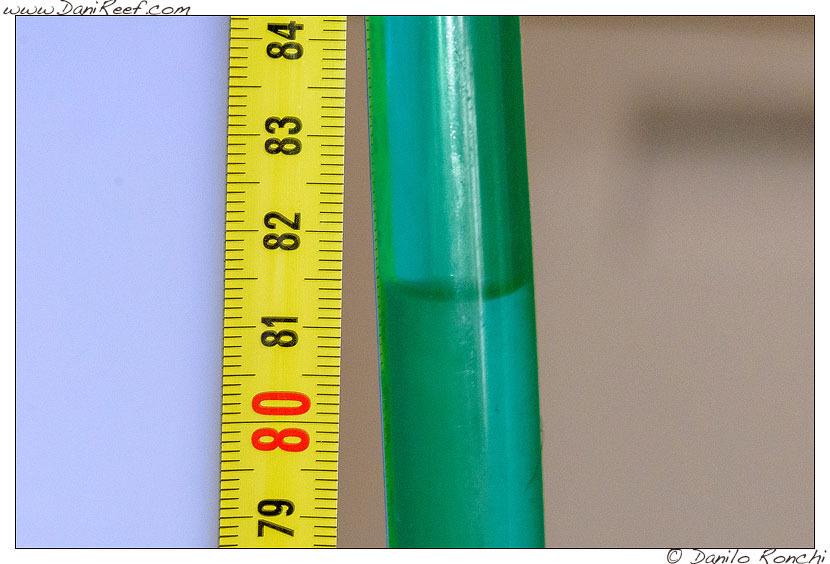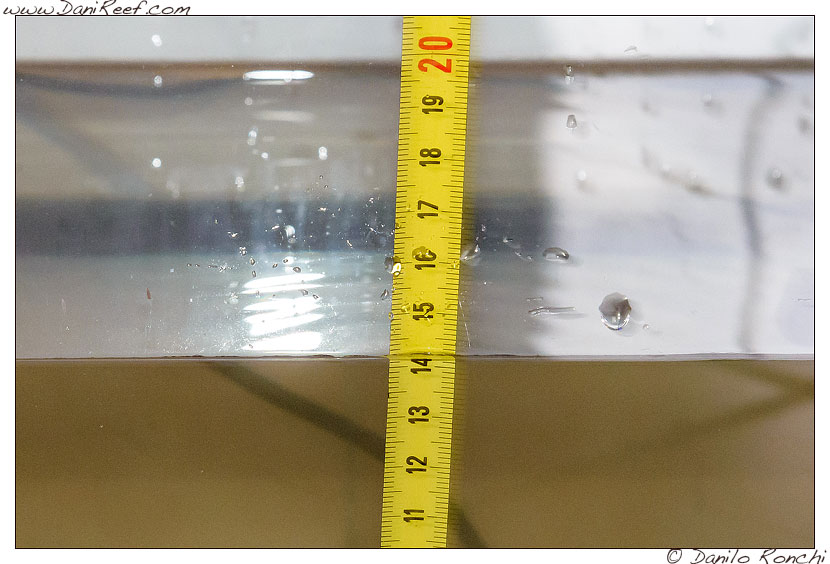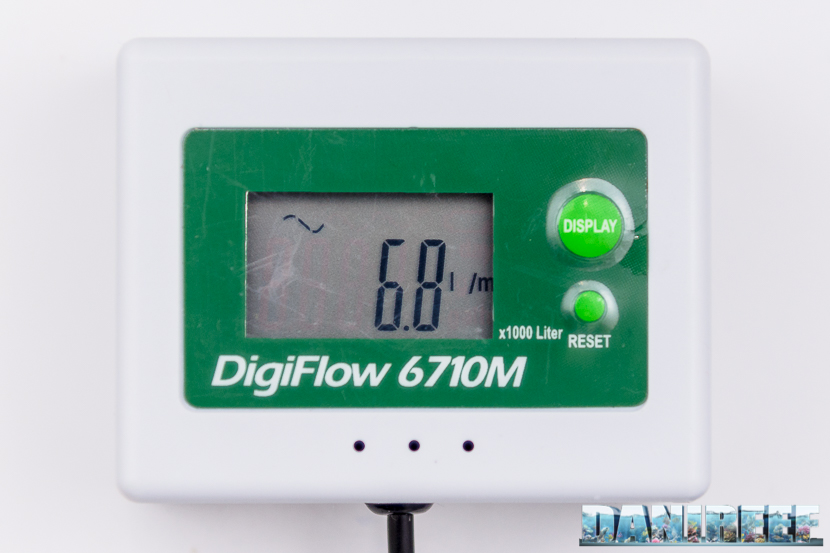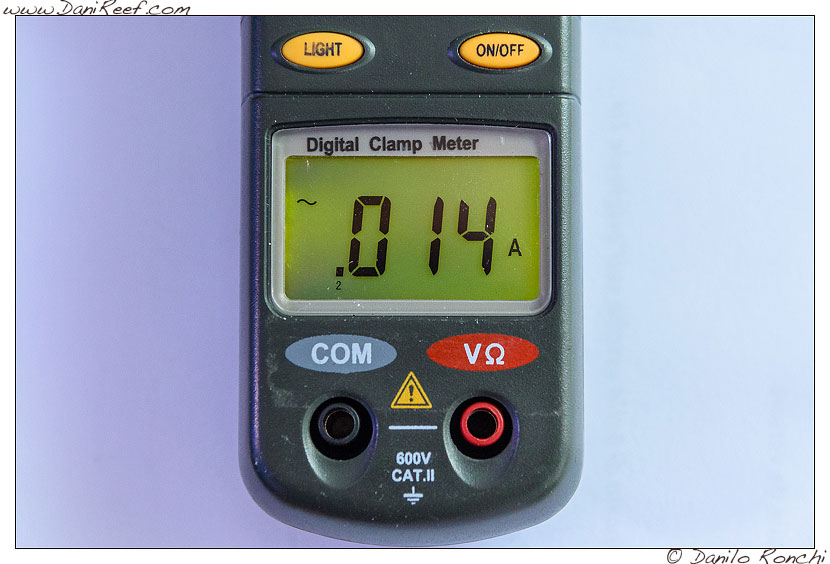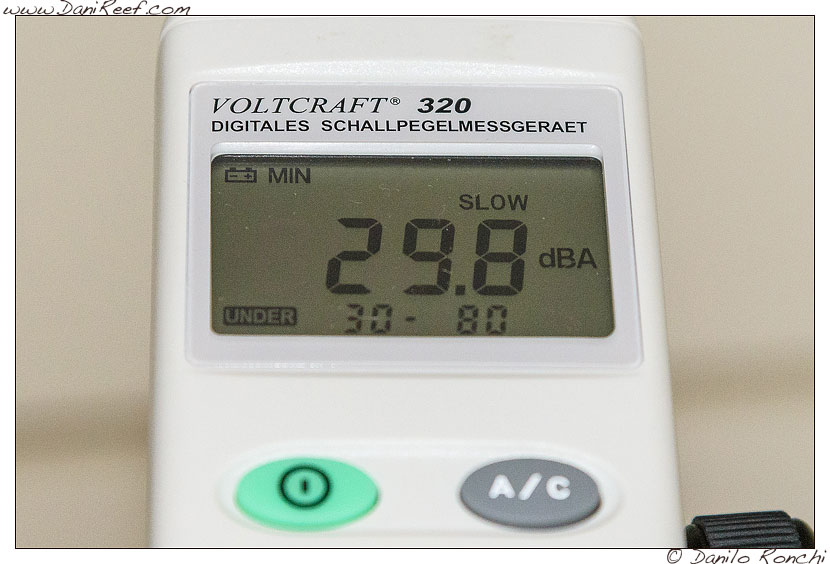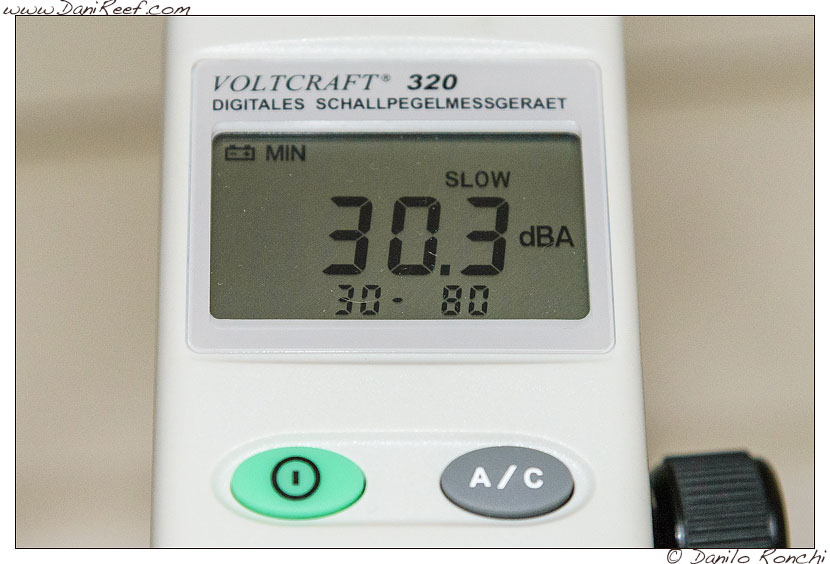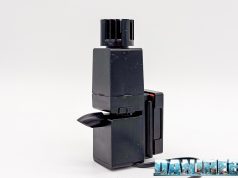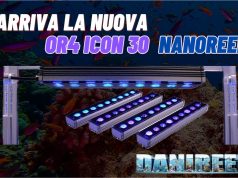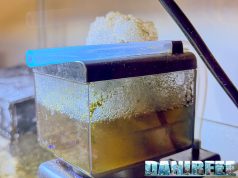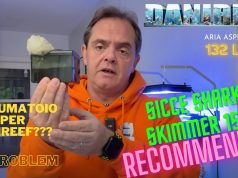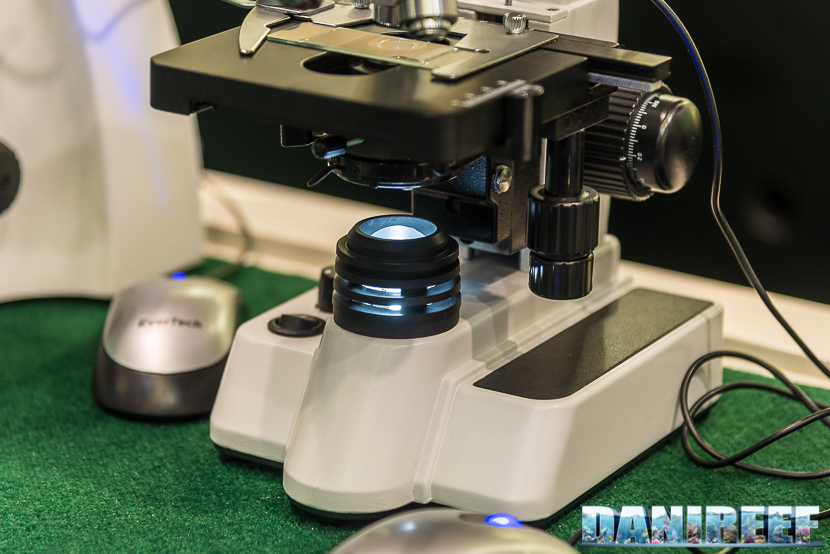Our test
We have used the small Sicce Syncra Nano for several months and in different ways. We have start by using it with our fluidized bed Ultra Reef ul-100e, then we have used it as our osmolator pump together with the Hydor smart level control, and it was very reliable, silent and perfectly suitable for the tasks.
The measurations
The max height of the Sicce Syncra Nano
The first test we did was to measure the max height. The test is very simple to accomplish. We dropped the pump into a small aquarium with 14 cm of water inside, we have connected the pump to a plastic garden hose held vertically, and we have measured the height reached by the water column from the ground. We then removed the height of water in the aquarium, given that the max height is the distance between the two levels of water.
We have read for our Sicce Syncra Nano 81,5 cm.
This picture shows us the height of water inside the aquarium, as you can see we had 14,2 cm.
So for the tiny Sicce Syncra Nano we have read 81,5 cm – 14,2 cm = measured maximum height 67,3 cm (70 cm declared)
Output test of the Sicce Syncra Nano
Measure the pump output is been now very easy thanks to the new DigiSavant DIGIFLOW 6710M. We have put the flow from the pump towards the flow meter and we have read the result expressed in liters per minute.
We have read, as you can see, 6,8 l/m, or 408 l/h, a value very close to 400 l/h declared by Sicce.
Test of power consumption of the Sicce Syncra Nano
During the output test we have also measured the power consumption with current clamp, but it was impossible to measure the power factor (more information here).
The power consumption has shown 0.014 amps or 3,08 watts (0,014 A x 220 V = 3,08 watt) versus 2,8 watts declared.
Here in Italy we have a price for kilowatt equal to 0,27 euro, so if we use this pump for one year, we will have to pay approximately (3,08watt*24*365/1000*0,27)=7,3 euro per year.Yet not a great cost!
The noise test of the Sicce Syncra Nano
We have measured the sound pressure at 1 meter from the pump, that it was placed inside the small aquarium we used for our test, and with no other equipment.
The first thing we did, was to measure the ambient noise, that it was 29,8 dB, a very quiet room.
Then we have powered on our sound meter, and we have scored a sound pressure of 30,3 dB, a value too low to be heard.
The sound level meter used to score the measurements was been the usual VOLTCRAFT 320, digital sound level meter to IEC 651 Type II that for the effect of the measure is sufficiently reliable. Given the nature of the noise to be measured all measurements were performed with the attenuation curve dBA.






